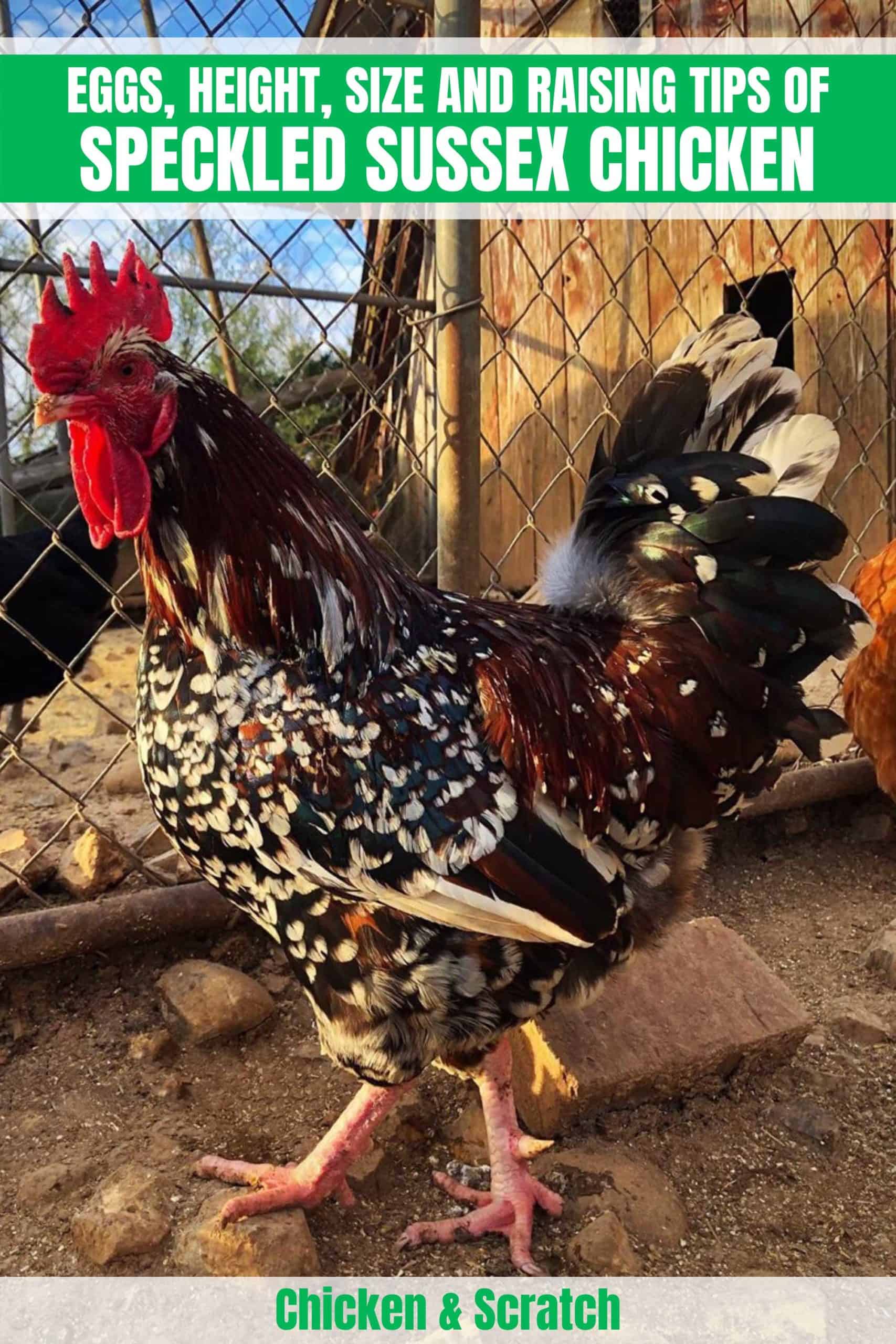Speckled Sussex chickens are a beautiful addition to any backyard flock. Their sweet, sing-songy clucks and relaxed dispositions make them a favorite chicken with children.

If you’re considering adding Speckled Sussexes to your flock or starting a brand new one, we’ve got everything you need to know about this sweet chicken breed.
History of Speckled Sussex
The Speckled Sussex chicken breed gets its name from their pretty, dotted plumage and from the English county of Sussex that they were bred in. This breed is over 100 years old now. They were first recognized as an individual breed in 1914.
Bred as a dual purpose chicken – one used for both egg-laying and meat – the Speckled Sussex became a huge favorite for both those qualities.

As an independent breed, the Speckled Sussex originates from the parent stock of the Sussex breed. There are eight different colors that are recognized.
They were bred from the original combination of chicken breeds that created the Sussex, with the Speckled being the oldest color. That exact combination has been lost in the annals of time.
The Sussex breed as a whole is extremely old, as Oklahoma State University notes, it was a breed before the first poultry show at the London Zoo in 1845.
The history of the Sussex area in England actually points to the growth of the Sussex breed over many centuries, after the practice of consuming chicken as meat was introduced by the Romans in the year 43 A.D. No breed standard was drawn up, however, until 1914.
Around the same time that the breed standard was created, the Speckled Sussex was one of two of the top chicken breeds used for meat production.
Its carcass qualities made it very popular before the advent of commercial chicken breeds from terminal crossbreeding programs. The main cuts from the Speckled Sussex are smaller than those from commercial meat strains and so fell out of favor.
| Attribute | Speckled Sussex Chicken |
|---|---|
| Purpose | Dual purpose (meat and eggs) |
| Egg color | Light brown |
| Egg size | Large |
| Broody | Yes |
| Heat tolerance | Yes |
| Cold tolerance | Yes |
| Comb type | Single comb |
| Egg production | 180-240 eggs per year |
| Chicken skin color | White |
| Life span | 6-8 years (varies depending on care) |
| Adult weight | Hen: 7 lbs, Rooster: 9 lbs |
| Backyard friendly | 4/5 |
Speckled Sussex Breed Standard
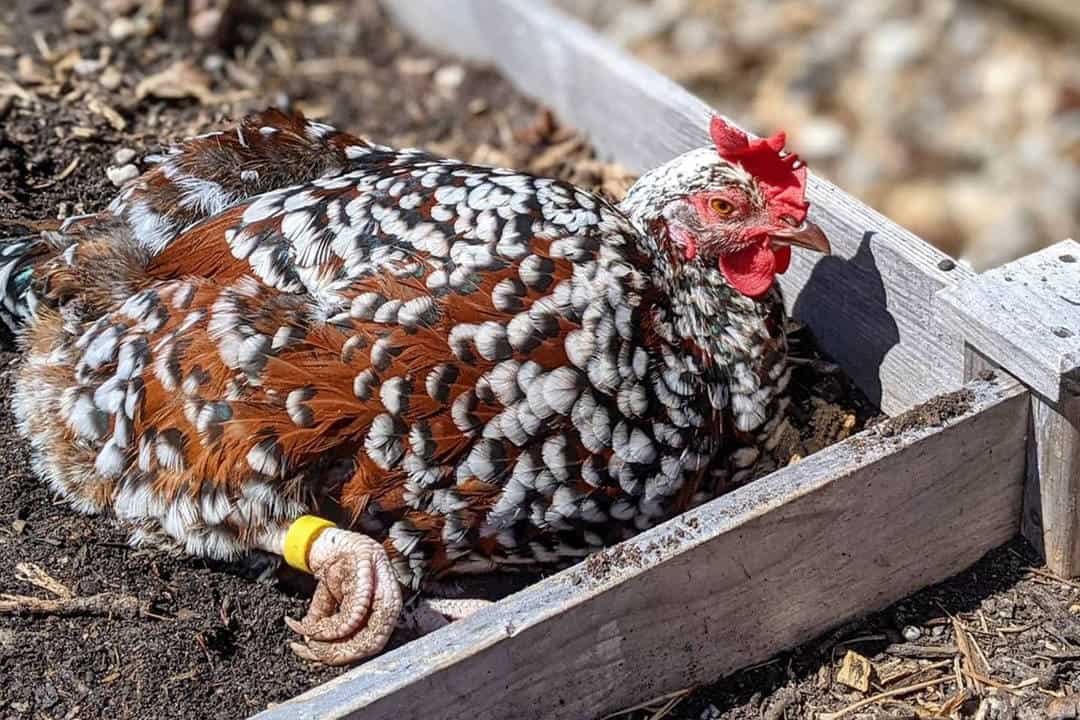
The American Poultry Association classifies the Speckled Sussex as a heavy breed. Hens will weigh around 7 pounds, and roosters will weigh in at 9 pounds. They are considered a heritage breed of chicken. This means the breed was established with a standard of perfection before the mid-1900s.
A good quality Speckled Sussex should have a flat, board back with a deep chest. The base color of their plumage is red mahogany.
At the tips of some of the feathers are white spots with black/beetle green iridescent bars separating the spots from the mahogany. Every year when the chicken molts they will grow more feathers with white spots.
The skin of a Speckled Sussex should be white, and their feet and legs should be as well. They have a single red comb. A single comb is the most common one seen on a chicken. It is one line with several spikes along its length. Their ears and wattles are also red.
Any chicken with crooked or extra toes, a crooked beak, or other malformations doesn’t meet breed standards. Some of these malformations can impact the quality of life of the chicken by hindering its ability to eat or move around effectively.
If any of your Speckled Sussexes look off like this, cull them to prevent passing those traits on to another generation.
Personality and Temperament
Some chicken breeds are big and bossy. The Speckled Sussex is not one of them. Sometimes a particular chicken may differ, but in general, they are sweet and have a calm disposition. Many people are able to tame them enough that they can pick up a Speckled Sussex and hold them on their lap.
Because they are not bossy, Speckled Sussexes can fall pretty low in the pecking order of the flock if you have larger, more aggressive breeds as well. To help prevent bullying by another chicken you can keep a flock of chicken breeds that all have similar temperaments to your Speckled Sussex.
In general, a Speckled Sussex chicken will get along well with Buff Orpingtons, Wyandottes, and any bantam breeds. More assertive breeds like Barred Rocks or Rhode Island Reds are too domineering to keep with Speckled Sussexes.
Keeping a flock of chickens with compatible temperaments is important because an extra mean chicken may injure weaker, more friendly ones. Some an alpha chicken will even prevent other chickens from accessing the chicken feeders and waterers, creating a dangerous situation.
If your Sussex is being chased away from food and water you’ll have to either supply extra feeding stations or change which breeds you keep to ensure everyone gets along.
Speckled Sussex Egg Laying

Speckled Sussexes lay quite well for a dual purpose bird, averaging 180-240 eggs per year. Their eggs are light brown, smooth, and large.
Many flock owners want to keep the egg production rolling through the winter. The truth is hens slow way down or even stop completely at this time. The Speckled Sussex is no different. Left to their own devices, Speckled Sussex hens may give an egg or so per week during the winter.
If you’re willing to invest a little time and money on lighting for your coop you can change the number of eggs you get from your hens in the winter.
This is because the internal clock of the hen uses the number of daylight hours sensed to trigger egg production. When the days are short there aren’t enough hours of light to trigger this response.
Setting a light on a timer so that it turns on at 5:30 am will add a few hours to the amount of daylight your flock senses. Has the light set to turn off after the sun has fully risen above the horizon?
If this isn’t enough to boost egg laying, having the timer on the light set to turn on an hour or so earlier will do the trick.
Health Issues and Care
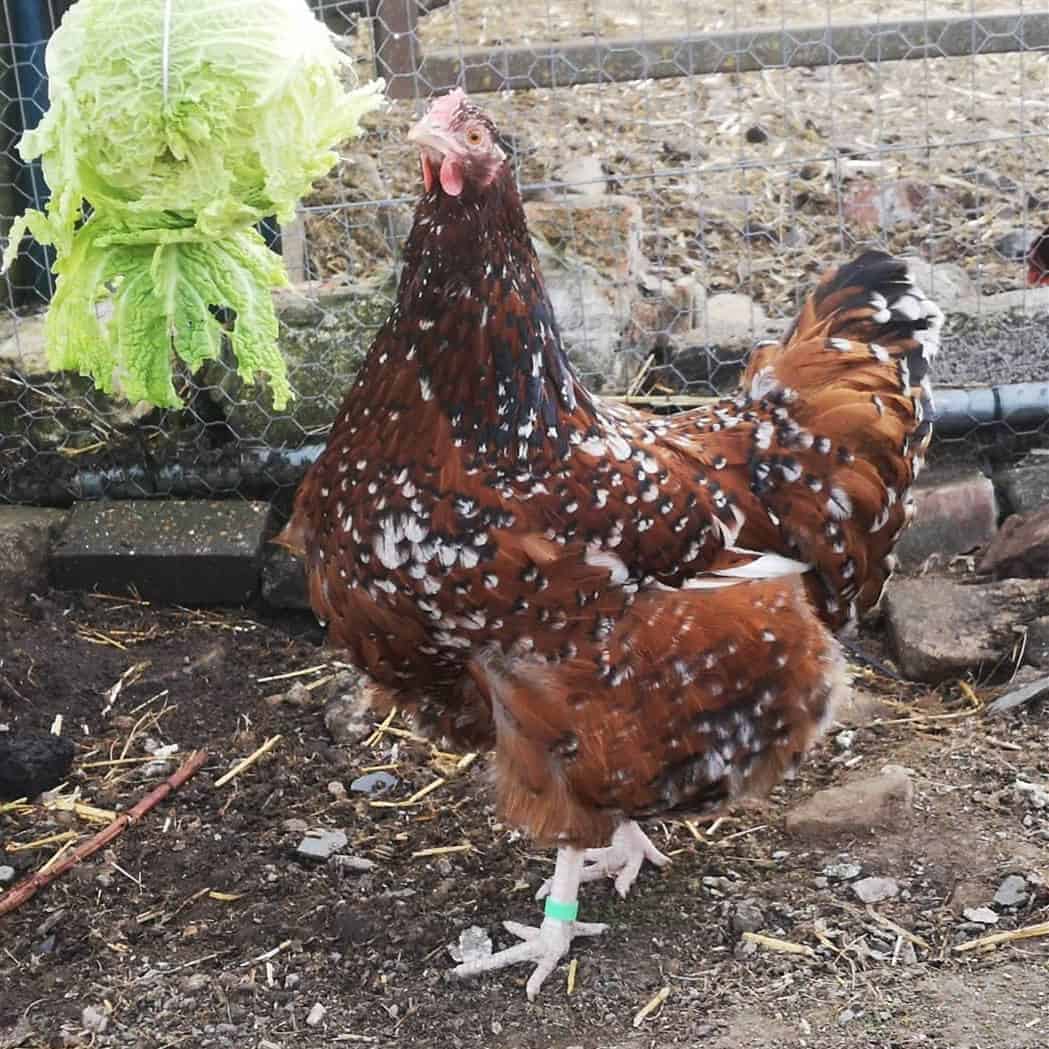
Like all animals, a chicken requires clean water and ready access to food to thrive. You can ensure they have these basic requirements using a gravity feeder and keeping plenty of waterers in the areas they have access to.
A clean, healthy coop will prevent many diseases and pests from bothering your flock. When building or buying the chicken coop, figure 2-3 square feet of space per chicken. Many people say you can use less, but more room allows you to clean less by preventing excess poop levels.
Some common ailments that affect Speckled Sussexes and all other chicken breeds include:
- A bacterial infection that can be fatal in chicks
- Mites
- Botulism
Mites can usually be controlled by allowing your flock to have access to areas where they can dust bathe. This knocks mites off the chicken, and the dust particles help suffocate them.
You can tell if a chicken is infested with mites if they have a droopy, pale comb. Check for the mites around the eyes or look for raised scales on the legs. If mites are found a deep clean of the coop is in order and diatomaceous earth may be spread to kill them.

3 Tips for Raising Speckled Sussexes
Speckled Sussexes are an easy going chicken breed and don’t require a lot of special considerations. For success with a backyard flock, a few general rules can be followed.
1. Give them room to move
Not everyone likes to free range their chickens. That’s completely okay. If you choose not to for whatever reason, make sure their run and coop are both larger than they would be if they had full access to a yard. They’ll stay healthier and you’ll have less work this way.
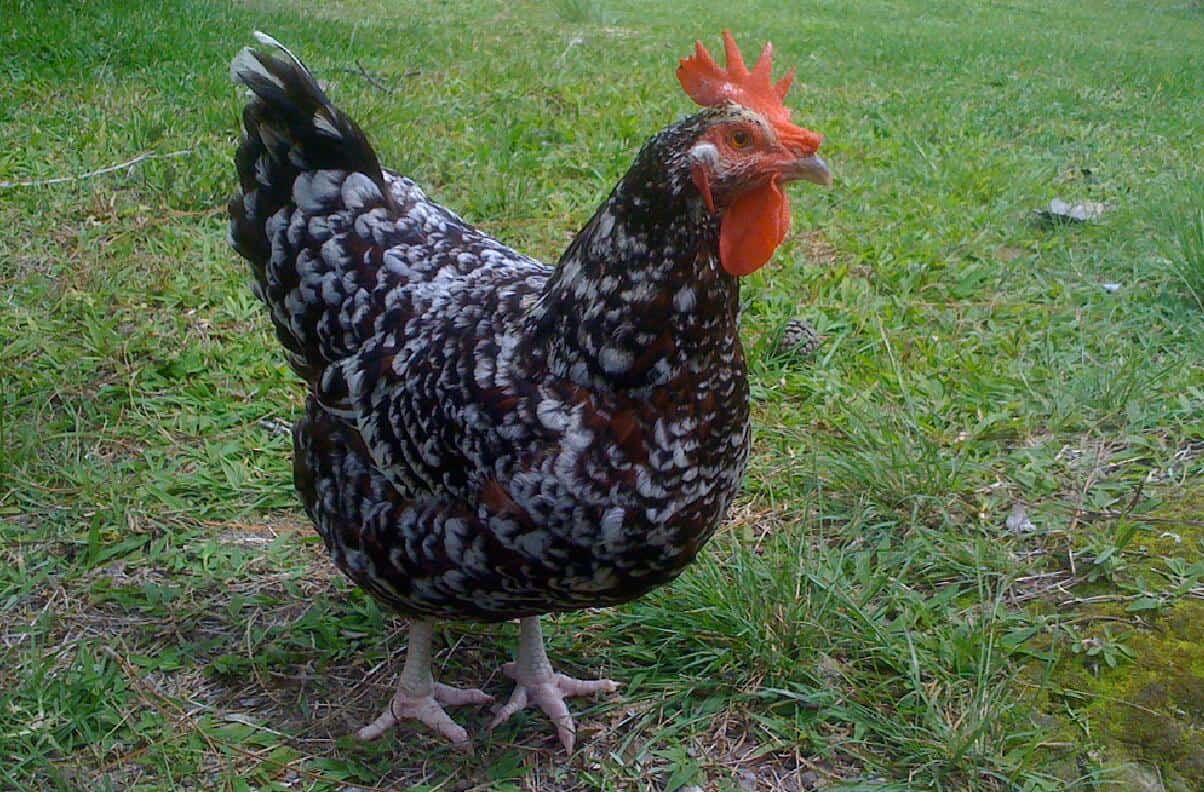
2. Protect them from predators
Every carnivore within miles will want to eat your flock. If you have a dog they will help protect them to an extent. Electric poultry netting around their run is much more effective, delivering a nasty zap to anything that touches it.
3. Keep it dry
Muddy, wet ground is unappealing for chickens. They can easily get bumblefoot this way, a condition from an infection that causes a swollen, necrotic spot to develop on the bottom of their feet. If they’ve scratched their run to the dirt, using straw as a mulch will help keep them out of the mud when it rains.
Loving the Speckled Sussex
The Speckled Sussex is such a sweet, easy-going bird, they deserve a place in your flock. With good egg laying abilities and their beautiful plumage, you can enjoy a flock of Speckled Sussexes happily, watching as the years make them more bespeckled and beautiful.
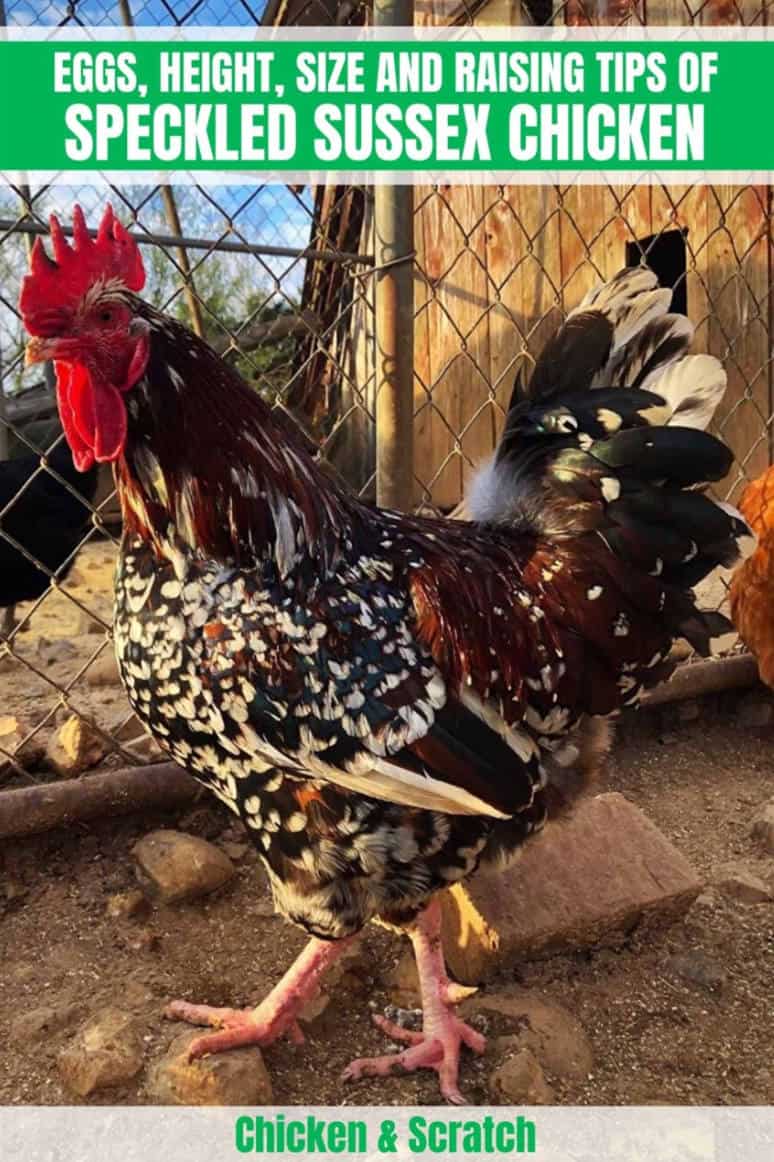

Joseph Hudson has been raising chickens for over 15 years. In 2018, he completed the Agriculture & Natural Resources program at Mt. San Antonio College. He currently raises over 1400 chickens on his 7.5-hectare farm. He keeps sharing his experience on raising healthy and happy chickens on Chicken Scratch The Foundry.
